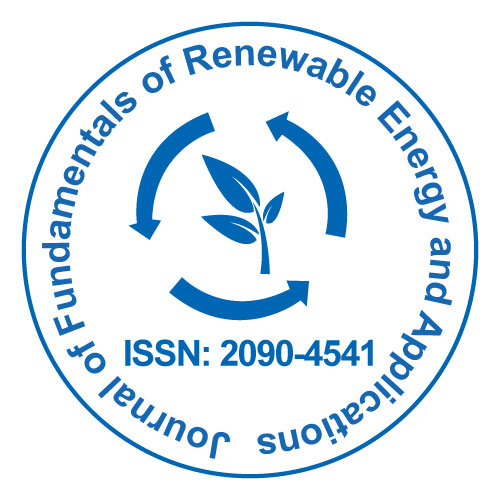
Journal of Fundamentals of Renewable Energy and Applications
Open Access
ISSN: 2090-4541
+44 1300 500008

ISSN: 2090-4541
+44 1300 500008
Commentary - (2022)Volume 12, Issue 1
One of the indirect forms of solar energy is hydropower. It is often regarded as the most developed and environmentally favorable renewable energy source. The renewable energy obtained by water descending from high potential to low potential is known as hydropower. Water's potential energy is utilized to operate a hydro turbine, which provides hydro energy. This turbine is connected to the rotor of the generator. The electrical generator's stator is induced with a series of three-phase voltages.
The water cycle is reliant on the energy of the sun. When sunlight comes into contact with water in rivers, lakes, and seas, it warms the upper surface molecules. When they accumulate adequate energy, they quickly evaporate into the atmosphere. When these molecules rise into the atmosphere, they become cooler. When these molecules move through frigid locations with cool air, they condense and form water droplets. Because cold air has a less droplet holding capacity than warm air, these water droplets generate rain and keep water circulating in the sky. When it rains in the mountains, it freezes and forms glaciers.
Hydro energy generation is the most widely used renewable energy source on a global scale. It is renewable based on the hydrological cycle and emits the fewest greenhouse gases into the atmosphere. This commentary describes the fundamentals of hydroelectric energy generation and all of the possibilities for producing it.
Hydro energy is a type of energy that can be captured by moving water to power machinery or generate electricity. The energy of this entire process is powered by the sun, which can be gathered to efficiently produce electricity for other mechanical tasks. Because the water cycle is an unending process that repeats itself indefinitely, hydro energy is seen as a sustainable source of energy.
Hydro energy production is the most widely used renewable energy source worldwide, particularly in the subtropical climate area. Hydropower is a renewable energy source derived from flowing water, and it is one of the most dependable, technically feasible, and environmentally beneficial renewable energy alternatives. The conversion of hydropower from flowing water to electricity is known as hydroelectric energy. If the original source of energy is water, the process is known as hydropower or hydroelectric power.
Many hydroelectric power plants are built on streams, rivers and canals. Nevertheless, water storage behind dams is required for consistent, constant, dependable, and sustainable electricity output. Dams retain water for future release for residential and industrial use, agriculture and power generation. The reservoir functions similarly to a battery, holding water and releasing it as needed to produce electricity.
Hydropower energy could be used to power machinery, produce energy or both simultaneously. Mechanical uses are most common in small-scale hydropower facilities, where the produced electricity is utilised to power simple mechanical tools and machinery for crushing, milling, grinding, and sawing. In certain cases, the output shaft of the small - scale hydropower turbines is expanded in both dimensions to allow for mechanical power generation as well as electrical generation.
There are numerous reasons why the more hydroelectric power or hydroelectricity is beneficial, such as the fact that hydroelectric power is a clean, renewable form of energy that does not contribute to global warming or climate change, as fossil fuels such as oil do. Using hydropower offers numerous advantages. It has the potential to help us produce more electricity more quickly, consistently, and sustainably in the future.
Citation: Carolina S (2022) Fundamentals and Applications of Hydro Power Energy. J Fundam Renewable Energy Appl. 12:283.
Received: 24-Feb-2022, Manuscript No. JFRA-22-18066; Editor assigned: 28-Feb-2022, Pre QC No. JFRA-22-18066 (PQ); Reviewed: 14-Mar-2022, QC No. JFRA-22-18066; Revised: 24-Mar-2022, Manuscript No. JFRA-22-18066(R); Published: 31-Mar-2022 , DOI: 10.35248/2090-4541-22.12.283
Copyright: © 2022 Carolina S. This is an open-access article distributed under the terms of the Creative Commons Attribution License, which permits unrestricted use, distribution, and reproduction in any medium, provided the original author and source are credited.